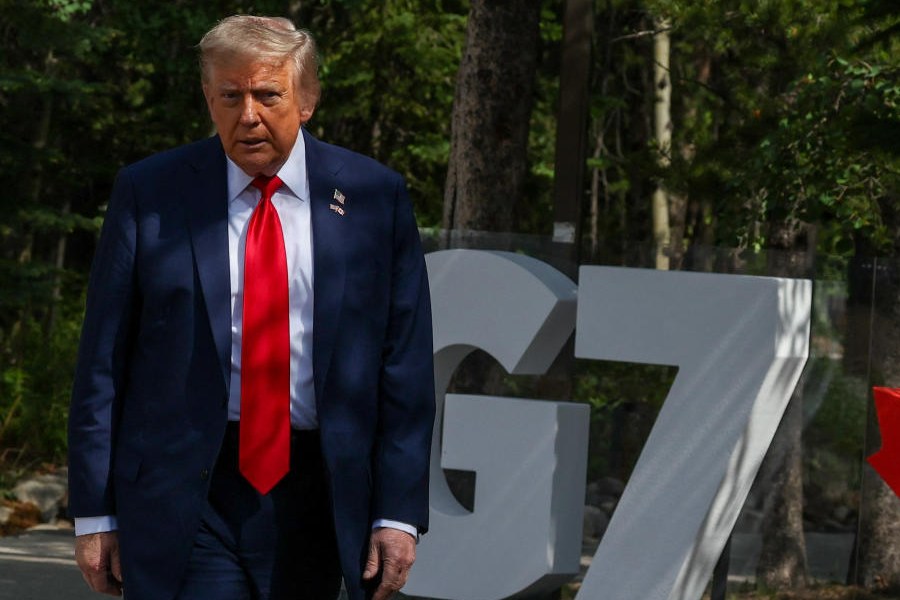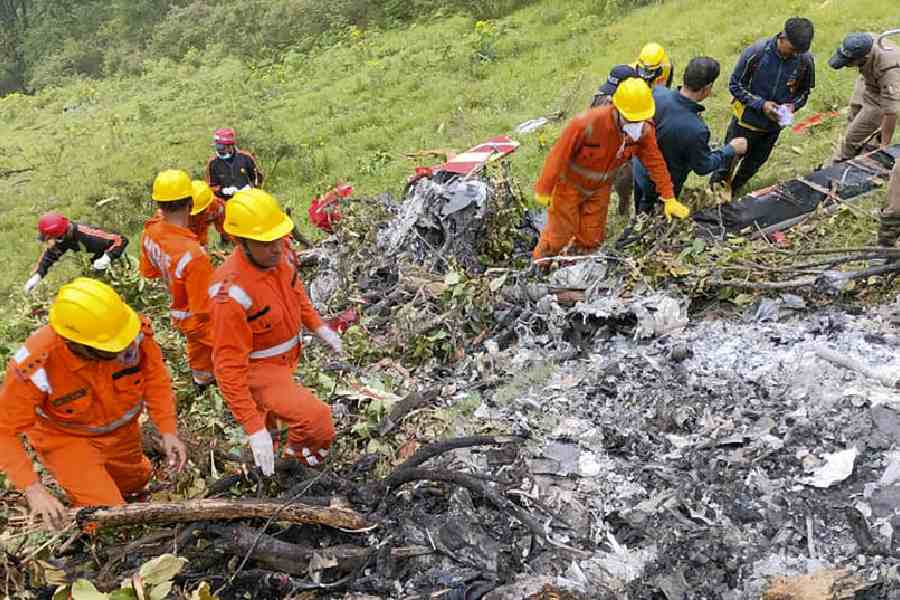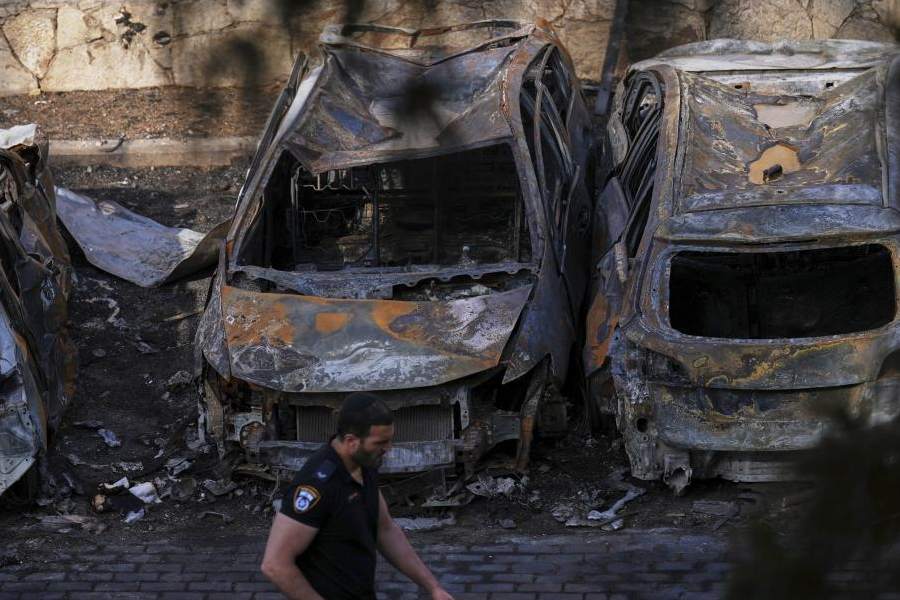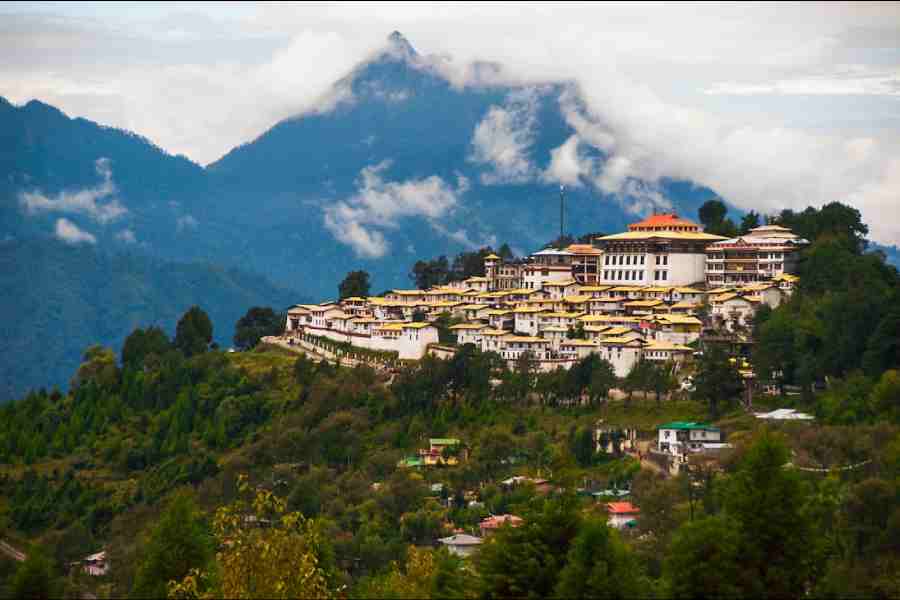 |
When I was on a panel at the literature festival recently held at the Victoria Memorial, someone from the audience asked me how I felt sitting under the shadow of the old Imperialist queen. The question got me thinking. The Memorial has always been there, inlayed into my earliest memories, as must be true for most middle-class children brought up in Calcutta. Asked a similar question at the festival, Vikram Seth remembered it being called ‘Toria Moria’. Being a few years younger than Vikram, and from a slightly different segment of society, I have no memory of that label. For me the place was always called ‘Wicktorya’, ‘Bhiktoriyaa’ or‘Bhiictudia’, ‘Memoryull’ or ‘Memudiyaal’, depending on whether the speaker was Gujarati, Biharwari or Bengali. And it was always one of the other, Victoria or Memorial, rarely ‘Bhiroiyamamumrial’, the whole mouthful clearly challenging for people not used to speaking too much English.
In childhood, the Memorial meant Sunday afternoons, the smell of balloon gas, orange ices, Farinni ice-cream in those plastic ball-containers which you could clean and re-use for hand-cricket, the banned but visible pleasures of lethally dangerous jhaalmuri, puchka, nimbu-paani and sugarcane juice and the bizarrely permitted chana jor garam. The big white pile itself held no interest, except the steps were fun to run up and down on; the whole focus was on the lawns and the expanse of the Maidan just outside. The black metal fat lady slouching into her throne would later remind me of nothing so much as various aunties addicted to TV serials, but while her statue was still there, the only game was to spot which protuberance the crows and pigeons had chosen that day.
Around age ten, the Maidan became the main stage, with Sunday morning cricket games. A bit later, discovering the joys of photography, the classic thing to do was to go to VM before dusk to try and catch scenic frames with dome, pool reflections and sunset. With the arrival of our generation’s mass libido, the true function of Victoria finally became apparent: in this soul-less, love-enemy of a prying prude of a romance-terminator of a town, this monument to the Great Iron Petticoat was one of few places where couples could go and attempt coupling, or some semblance thereof. The white pile still didn’t matter, save as a backdrop, but suddenly the attention shifted from the Maidan and the Memorial’s front lawns to the unkempt shrubbery on the side, to the patches under secluding trees where the grass had been completely rubbed off by human lawn-mowers fuelled by simmering lust.
It wasn’t the best maintained of parks but still, the erotic pull of the place was enormous. I remember one winter morning in the late 70s when the passion for photography and vaultingly ambitious desire conjoined to make me convince a certain somebody to let me take some pictures of her at the Memorial. It was a ridiculous exercise. I was still a boy fighting acne, she was ‘much’ older than me, already one of the city’s happening young women, already on her way abroad, and the only thing that could develop between us were some black and white photographic prints. The saving grace was that she liked the photos and I noted that the black of her bell-bottom suit did contrast nicely with the white marble of the steps and pillars.
In a few years it became dodgy for a girl and a boy to go to VM after 4pm or so. By that period a different Calcutta had been established and the oncoming evening gave cops and other thugs the licence to come and extort bribes from sweaty couples who were perhaps doing no more than passionately holding hands. There is a memory from the early 80s when I would pass the open grass across the road from the Planetarium and church. In the hot afternoon sun, squatting just outside the Memorial boundary, would be a row of men, backs to the road, heads pressed against the low pillars. When you first saw them you wondered why they were all urinating so close to each other in exposed space. Then you realized these men were relieving themselves but in a quite different way. It took a while to understand that this was the closest a working class male in Calcutta could get to a sex show. As fugitive couples fumblingly honoured Victoria Regina’s memory inside the grounds, the city played voyeur from just outside the perimeter.
Over the last few years, the Memorial has become a much more welcoming space. Its potential for being more than a kids’ park and lovers’ sanctuary has been increasingly realized; the museum and the institution now connects far more with different kinds of public; this great space in the centre of the city has begun, at long last, to have a dialogue with the citizenry. Returning recently to the VM, I found myself thinking about the erotics of space and the nature of voyeurism. Unlike in the 90s and ’00s, Calcutta is now a strangely aspirational city. Our voyeurism is no longer directed inwards. With degrees varying from sad longing to electrified frisson we now spy at the world, making a greedy surveillance of the things we don’t have. So, while lauding the changes that have been brought about at VM, I found myself wanting much more.
With a cultural voyeur’s memory, I found myself thinking of how another city in some other part of the world (not necessarily in only Europe or America, mind) might have developed this zone. I found myself imagining cafes, restaurants for different thicknesses of wallet, beer gardens and wine bars; more than one open air cinema and performance space; regular public art projects and music festivals. Rather than shutting down at 6.30 or 7pm, why isn’t the Memorial open later into the night, with proper lighting around the grounds? Are we that scared of young people dallying? Are we that unable to protect them from predatory criminals? On the contrary, if there was a safe, brightly lit museum-park at one of the nodal points of the city, a space that allowed children to play and couples to canoodle, but also encouraged far more than that, it might become one of the starting points of a new, civilized urban culture in Calcutta.
As every infant in Calcutta knows, the Victoria Memorial is not run by the state government but by the Ministry of Culture at the Centre. Neverthless, there should be a possibility of some close and positive collaboration between Delhi, Nabanna/Writers’ and private sponsors to expand the potential of this wonderful place. While making every effort to preserve the old aesthetic (so, no tacky over-decorated gardens please, of the kind that now surround VM and dot other corners of the city), we should not pretend the Memorial is anything like that tomb in Agra that it mimics. Though the Taj Mahal has not been kept in cotton-wool the Victoria Memorial has been wrapped in a certain wool of the mind, encased in a certain kind of bureaucratic mothballing, from which it now needs to emerge.
This can and should happen slowly, with both boldness and deliberation, but the process of connecting the VM to a large cross-section of Calcutta should be pleasurable and irreversible. Only then can the place itself escape the shadows, not only of the long departed Victoria but also of the recently departed Emperors of Stalinism and the small-minded babus and politicians in Delhi all of whom saw the place as nothing more than a mausoleum of the British Empire.










